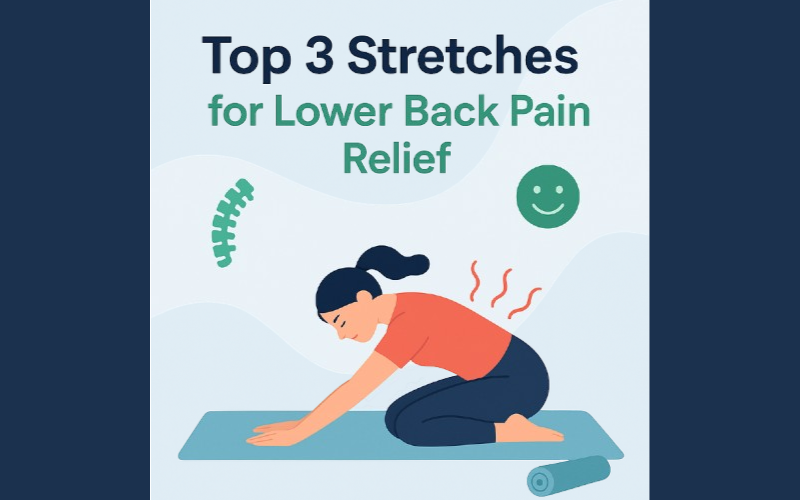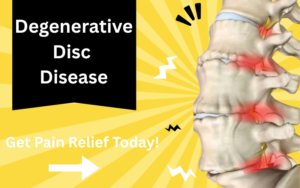Lower back pain is one of the most common reasons people visit a doctor or physical therapist. If you’re looking for fast and safe ways to feel better, you’re in the right place. In this guide, we’ll cover the top 3 stretches for lower back pain relief (2025 edition). These simple moves can help loosen tight muscles, ease stiffness, and even prevent future flare-ups. Ready to find out which stretches work best — and how to do them the right way? Let’s get started!
Table of Contents
🚨 Looking for more information about Lower Back Pain? Check out our The Complete Guide to Managing Chronic Lower Back Pain at Home (2025) or other related posts throughout this site.
🏁 Why Stretching Helps Lower Back Pain
If you struggle with lower back pain, you’re not alone. Studies show that nearly 80% of adults experience back pain at some point. The good news? Adding the right stretches for lower back pain to your routine can make a big difference.
Here’s why stretching works:
1. Stretching Loosens Tight Muscles
When muscles around your lower back get tight — especially your hips, hamstrings, and glutes — they pull on your spine. This pressure can cause pain and limit your movement. Stretching gently lengthens these muscles, reducing tension and helping your back move more freely.
2. Stretching Improves Blood Flow
Good blood flow brings oxygen and nutrients to your muscles and joints. When you use stretches for lower back pain, you boost circulation, which can speed up healing and decrease stiffness.
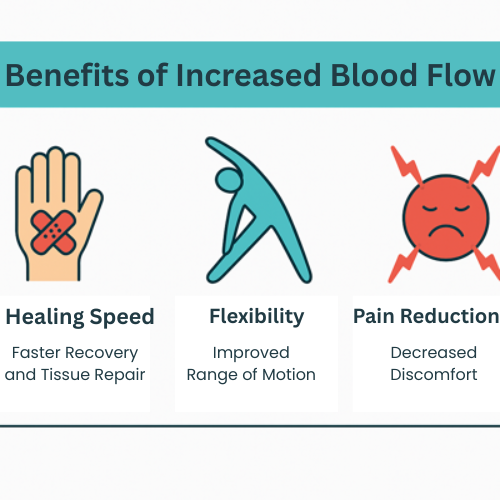
3. Stretching Builds Flexibility and Strength
Better flexibility means your muscles can handle more movement without getting hurt. Many stretches for lower back pain also strengthen key areas like your core, hips, and legs. A strong, flexible body supports your spine and protects it from future injuries.
4. Stretching Relieves Stress
Tension and stress often show up as tightness in the lower back. Stretching promotes relaxation by calming your nervous system. A few slow, mindful stretches each day can lower stress levels and make you feel better both physically and mentally.

❓How Often Should You Stretch for Lower Back Pain Relief?
When it comes to managing lower back pain, consistency is key. But how often should you really do stretches for lower back pain to see real results?
General Guidelines:
- Daily is best: Gentle stretching every day helps keep muscles flexible and reduces stiffness.
- 2–3 times per day for flare-ups: If your back feels tight or painful, doing a short stretching session in the morning, afternoon, and evening can bring faster relief.
- Hold each stretch 20–30 seconds: Avoid rushing. Holding a stretch allows the muscles enough time to relax and lengthen.
- Repeat 2–3 times per side: Repeating each stretch ensures a deeper, more lasting benefit.
👂Listen to Your Body
It’s important to stretch in a way that feels good — not painful. A little tension is normal, but sharp or shooting pain is not. If a stretch feels uncomfortable, ease up or modify it. Over time, your flexibility and comfort should improve.
💡 Tip for Lasting Relief:
Pairing your stretches for lower back pain with strengthening exercises (like light core work) can create even better long-term results. Stronger muscles support your spine and help prevent future problems.
🏋️ Top 3 Stretches for Lower Back Pain (Recommended by Physical Therapists)
When done safely and consistently, stretches for lower back pain can ease tightness, improve mobility, and protect your spine. Here are the top three stretches physical therapists trust the most for lower back pain relief — plus a few modified options to fit your needs:
1. Child’s Pose Stretch
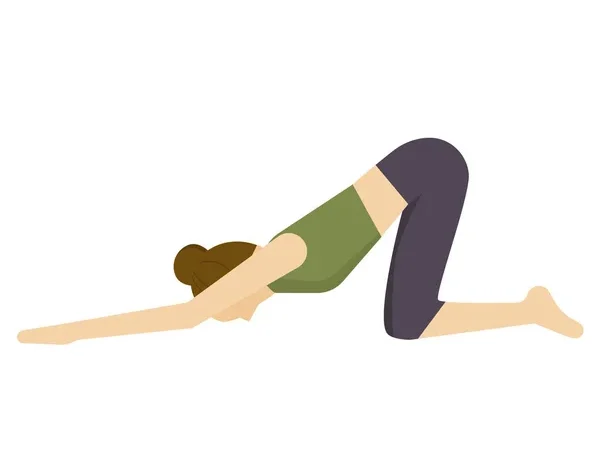
Why it helps:
Child’s Pose gently stretches your lower back, hips, and thighs while relaxing your spine and calming your nervous system.
How to do it:
- Kneel on the floor with your big toes touching and knees spread apart.
- Sit your hips back toward your heels.
- Reach your arms forward and rest your forehead on the floor.
- Hold for 20–30 seconds while breathing deeply.
- Repeat 2–3 times.
Modified Option:
- If kneeling is uncomfortable, do a seated forward fold instead. Sit on the floor with legs crossed and reach forward gently.
💡Pro Tip:
If your lower back is very tight, place a pillow under your belly for support.
2. Knee-to-Chest Stretch
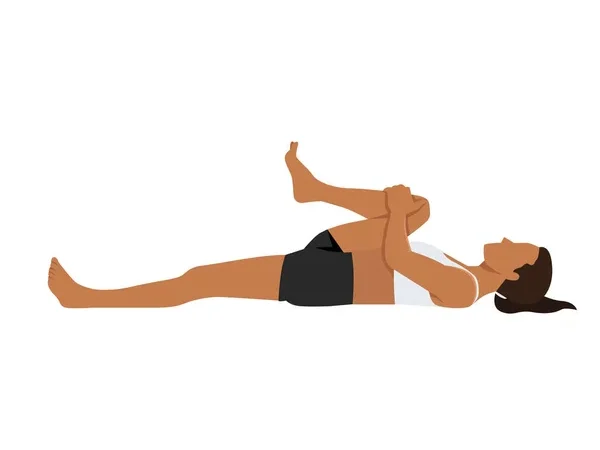
Why it helps:
This stretch loosens your lower back muscles and decompresses your spine, reducing pressure on your joints.
How to do it:
- Lie on your back with your knees bent and feet flat on the floor.
- Bring one knee toward your chest, holding it with both hands.
- Keep the other foot flat or extend the leg straight on the floor.
- Hold for 20–30 seconds, then switch sides.
- Repeat 2–3 times per leg.
Modified Option:
- If pulling one knee at a time is difficult, bring both knees to your chest together and hug them gently.
💡Pro Tip:
For an extra stretch, gently rock side-to-side once you have both knees pulled in.
3. Seated Spinal Twist
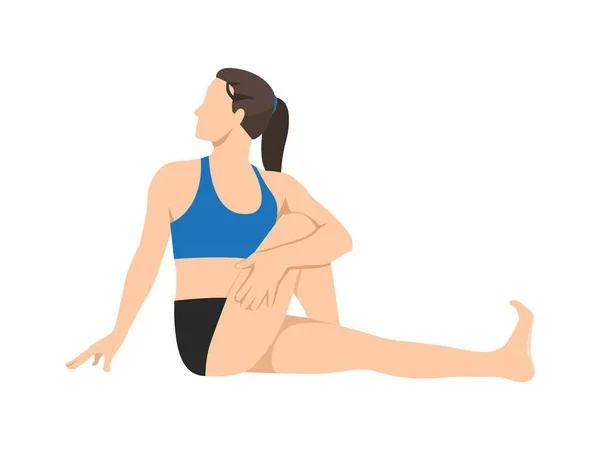
Why it helps:
Twisting motions stretch the muscles along your spine, hips, and shoulders, promoting better mobility and pain relief.
How to do it:
- Sit on the floor with both legs extended.
- Bend your right knee and cross it over your left leg, planting your right foot flat on the floor.
- Place your right hand behind you for support.
- Twist your torso to the right, using your left arm to gently press against your right knee.
- Hold for 20–30 seconds, then switch sides.
- Repeat 2–3 times.
Modified Option:
- If sitting on the floor is uncomfortable, perform a chair spinal twist. Sit tall in a chair, cross one leg over the other, and gently twist toward the top leg.
💡Pro Tip:
Keep your spine tall as you twist — imagine lifting up through the top of your head.
🧾 Conclusion
Lower back pain can hold you back from enjoying daily activities, but the right stretches make a real difference. By practicing these top 3 stretches for lower back pain regularly, you can ease tightness, improve flexibility, and support a healthier spine.
Remember, consistency is key. Start slow, listen to your body, and make stretching a part of your daily routine. Over time, you’ll likely notice less pain, better movement, and a stronger, more resilient back.
If you found these stretches helpful, stay tuned for more physical therapist-recommended tips and exercises to keep your body feeling its best!
Ready to take control of your back health?
Subscribe to our newsletter for more expert tips, rehab exercises, and stretch guides delivered straight to your inbox!


